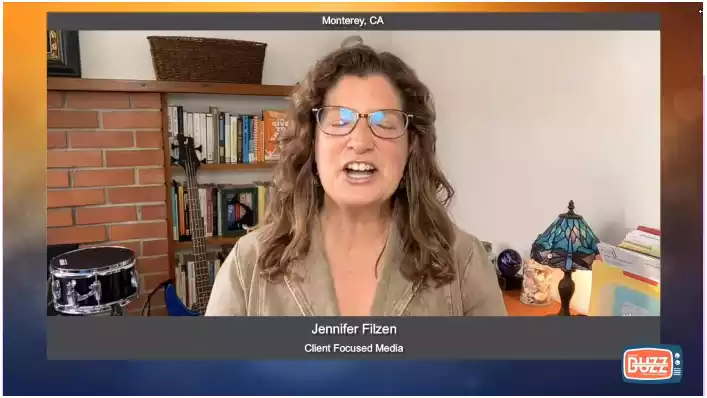Enhancing Healthcare Efficiency: Comprehensive Provider Training in Prior Authorization
Unlock the full potential of your practice with comprehensive provider training in prior authorization. Learn how expert training can streamline workflows, reduce errors, and enhance patient satisfaction. Dive into best practices that will transform your approach to prior authorizations.

Imagine waiting in lengthy queues for assistance as a thing of the past, and support agents are liberated from monotonous inquiries. Understanding how to appeal a prior authorization denial is crucial in navigating healthcare processes. If a prior authorization request is denied, the first step is to review the denial notice to understand the reason. Next, gather all necessary documentation, including medical records and a letter of medical necessity from your healthcare provider. Then, submit an appeal to your insurance company, following their specific appeal process and deadlines.
Let’s start exploring the top solutions for this issue!
Table of Contents
Comprehensive Provider Training in Prior Authorization

Background
Prior authorization involves healthcare providers obtaining approval from insurance companies before carrying out procedures or prescribing medications. Its primary purpose is to confirm that the recommended treatment or medication is medically necessary, safe, and cost-effective. The prevalence of authorization has recently increased as insurance companies aim to cut costs by limiting unnecessary treatments and medications.
Nevertheless, obtaining authorization can be a time-consuming task for healthcare providers. It often entails completing forms, making phone calls, and submitting documentation—all adding to the heavy workload of administrative staff. This administrative burden can result in delays in patient care and chances of errors, as well as negatively impact healthcare efficiency.
Understanding Prior Authorization
What’s Prior Authorization?
Prior authorization is when insurance companies review medications, medical procedures, and diagnostic tests to determine if they are necessary for a patient’s well-being. This step helps control expenses and ensures safety by avoiding unnecessary or unproven treatments.
Challenges of Prior Authorization
While beneficial, prior authorization can cause delays in patient care, increase tasks, and lead to dissatisfaction among healthcare providers and patients. Provider education can address these obstacles.
The Significance of Training in Prior Authorization
Reducing Administrative Burden
Training simplifies the authorization process. Healthcare providers who grasp the required documentation and procedural guidelines can submit requests efficiently and accurately, reducing errors and resubmissions.
Enhancing Patient Care
Efficient prior authorization procedures guarantee treatment for patients without delays. Trained providers can track preapproval processes, resulting in quicker care delivery and better patient outcomes.
Compliance and Penalty Avoidance
Proper training ensures healthcare providers adhere to insurance regulations, preventing penalties and rejections from insurers. Compliance with these standards enhances healthcare effectiveness.
Key Elements of a Comprehensive Training Program
 Getting to Know Insurance Policies
Getting to Know Insurance PoliciesAn essential aspect of the training involves introducing healthcare professionals to insurance policies, such as which services require approval and the criteria for getting it. Understanding insurance plans and their specific requirements can make the authorization process more efficient.
Documentation and Submission Procedures
Accurate documentation is crucial for authorizations. The training should cover all aspects of documentation, from records to submission forms. Healthcare providers must learn to fill out forms and provide all information to prevent delays.
Enhancing Communication Skills
Communication with insurance companies is key. The training program should incorporate practices for interacting with insurers, including addressing inquiries, appeals, and follow-ups.
Utilizing Technology and Tools
In today’s world, tools and resources, such as electronic health record (EHR) systems and specialized software, can aid in the prior authorization process. The training should include guidance on leveraging these resources to reduce manual tasks and improve overall efficiency.
I'm very thankful for Portiva who I know is looking after my practice while I'm gone the virtual assistants can manage prescription refills, documents they can triage patients and just kind of answer administrative questions and they can handle a lot on their own. But also, they're very good about contacting me if there's any emergency or anything I need to attend to. So I'm very thankful for Portiva they can help almost any provider almost anywhere and it really allows for some good work-life balance as I'm getting to experience right now at my family farm so I'm very thankful for Portiva and I'm very happy to use their services"

Board Certified Family Medicine Physician

Portiva's Virtual Medical Assistant - I have all the support I need. There's somebody checking my email, any patient messages. Patients are still able to schedule and handle any scheduling issues and any kind of billing that needs to still go through. Portiva hands handles it all for me. I have support i have somebody that I can access 24/7 pretty much. It's all very seamless. If somebody has an emergency or needs a medication called in. I know that the va's at portiva will handle that for me.

Board Certified Family Medicine Physician

Rolling Out the Training Program

The initial step in implementing a training program is evaluating healthcare providers’ current knowledge and skills in the authorization procedure. This assessment will help customize the training program to target any gaps in knowledge or specific requirements.
Creating Training Modules
After assessing the situation, develop training modules encompassing all authorization facets. These modules should include materials such as manuals, video guides, and interactive sessions to accommodate learning preferences.
Ongoing Education and Refresher Programs
Given the changing nature of the healthcare field and the evolving policies and procedures related to authorization, continuous education, and periodic refresher programs are vital to ensure that providers stay informed about the latest updates and best practices.
Assessing Training Effectiveness
Tracking Key Performance Indicators (KPIs)
To evaluate the training’s impact, monitor performance indicators such as the time taken for authorization approval rejection rates and successful submission percentages.
Feedback and Enhancements
Seek input from healthcare providers regarding the effectiveness of the training program and areas needing improvement. Continuously enhance the training based on this feedback to maintain relevance and efficacy.
In Summary
Improving healthcare efficiency through provider training in authorization is crucial in enhancing patient care quality and streamlining administrative processes. By empowering healthcare providers with knowledge and skills, organizations can reduce burdens, expedite patient care services, and ensure compliance, thus establishing a more efficient healthcare system. Healthcare institutions need to invest in training and education for their staff so they can handle the authorization process confidently and smoothly. This way, we can ensure that patients receive top-notch care while reducing the burden on healthcare professionals. Let’s keep focusing on enhancing the authorization process by implementing training initiatives.
To learn more about prescription approval that can enhance your medical practice. Discover more about Portiva and unlock a world of possibilities by visiting our homepage today!
- Hidden costs of prior authorization
- Healthcare operations with strategic prior authorization plans
- Preventing prior authorization mistakes
- Key strategies for improving prior authorizations
- Significance of quality assurance in prior authorization
- Examining prior authorization’s role in healthcare accessibility
- How prior authorization affects patient access to healthcare
- Enhancing communication in prior authorization processes
- Mastering compliance in prior authorization
- Systemic efficiency in prior authorization
- Multidisciplinary strategies for prior authorization
- Impediments for prior authorization
- Customizing prior authorization processes
- Education and support in prior authorization
- Effective communication in prior authorization
- Streamlining healthcare with electronic prior authorization
- Understanding patient rights in prior authorization
- Prior authorization regulatory compliance
- Financial strain of prior authorization on medical practices

